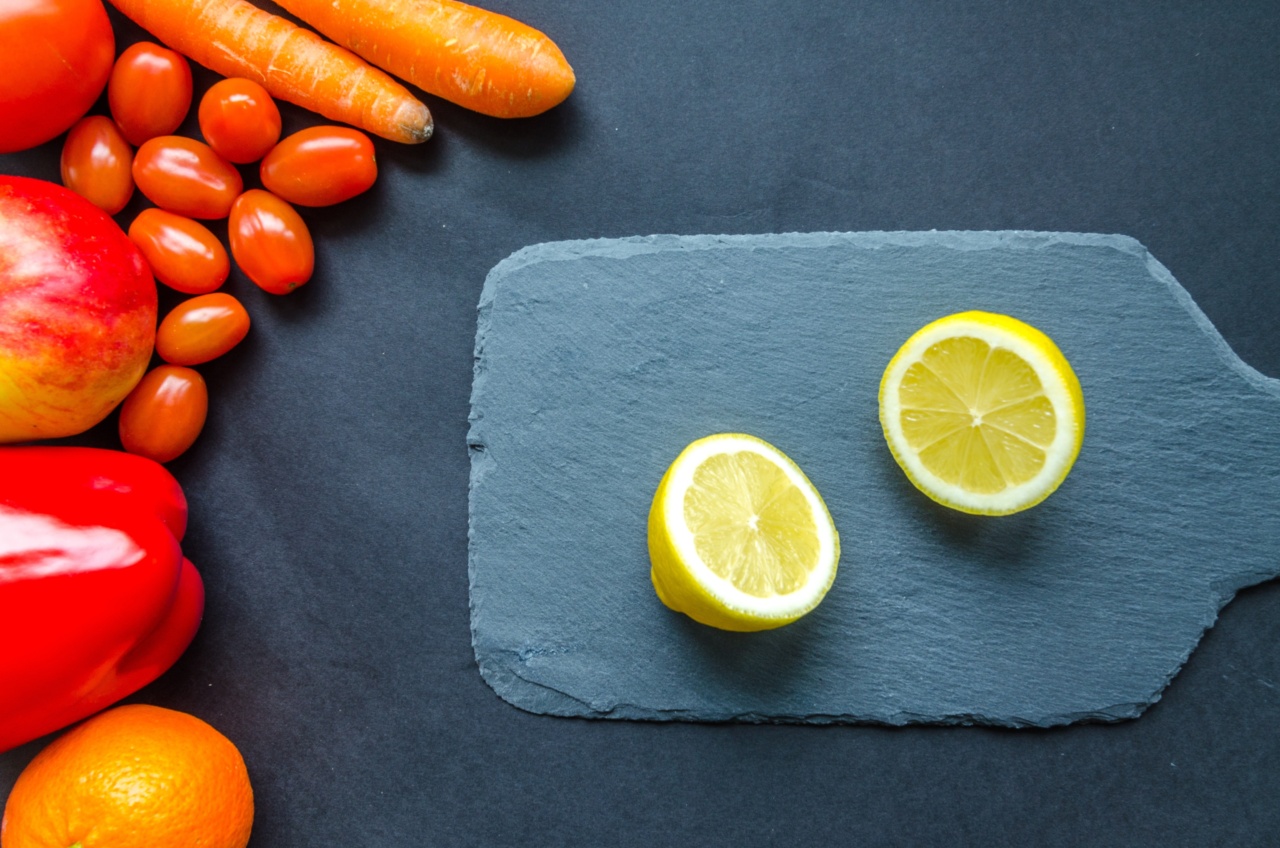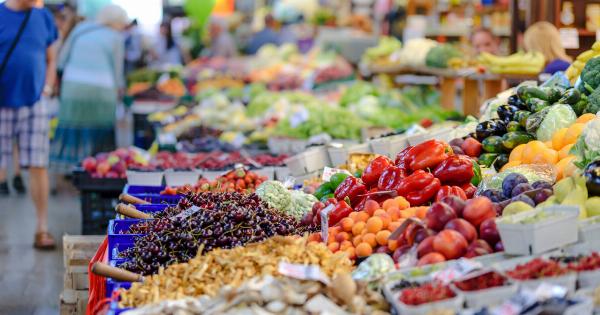Fruits and vegetables are healthy food choices that are part of a balanced diet. However, not all produce is created equal when it comes to exposure to pesticides.
While pesticides are necessary for protecting crops from pests and diseases, excessive exposure to these chemicals can be harmful to humans.
The Environmental Working Group (EWG) conducts an annual report on the fruits and vegetables that contain the most and least pesticides. This report is known as the “Dirty Dozen” and “Clean Fifteen” respectively.
Top 15 Fruits and Vegetables with the Most Pesticides
1. Strawberries
Strawberries are one of the most popular fruits, but they top the list of fruits with the most pesticides. According to the EWG, 99% of the strawberries they tested had detectable levels of pesticides, with 40 different pesticides found on the berries.
2. Spinach
Spinach is a popular leafy green that is highly nutritious but also has high levels of pesticides. The EWG found that 97% of spinach samples contained detectable pesticide residues, with up to 17 different pesticides found on the samples.
3. Kale
Kale is another leafy green that is highly nutritious but also high in pesticides. The EWG tested kale samples and found that 92% of them contained detectable levels of pesticides, with up to 18 different pesticides found on the samples.
4. Nectarines
Nectarines are a stone fruit that are similar in appearance to peaches but have a sweeter taste. According to the EWG, 94% of nectarine samples contained detectable levels of pesticides, with up to 33 different pesticides found on the samples.
5. Apples
Apples are a common fruit that are popular year-round. However, they are also one of the most contaminated fruits, with 99% of apple samples containing detectable levels of pesticides, with up to 21 different pesticides found on the samples.
6. Grapes
Grapes are another popular fruit that are consumed in large quantities. According to the EWG, 96% of grape samples contained detectable levels of pesticides, with up to 64 different pesticides found on the samples.
7. Peaches
Like nectarines, peaches are a popular stone fruit that are high in pesticides. The EWG found that 99% of peach samples contained detectable levels of pesticides, with up to 22 different pesticides found on the samples.
8. Cherries
Cherries are a small fruit that are often used for baking and desserts. According to the EWG, 91% of cherry samples contained detectable levels of pesticides, with up to 22 different pesticides found on the samples.
9. Pears
Pears are a fruit that is similar in texture to apples but with a softer skin. According to the EWG, 91% of pear samples contained detectable levels of pesticides, with up to 21 different pesticides found on the samples.
10. Tomatoes
Tomatoes are a common fruit that is often used in salads and other dishes. However, they are also heavily contaminated with pesticides.
The EWG found that 69% of tomato samples contained detectable levels of pesticides, with up to 15 different pesticides found on the samples.
11. Celery
Celery is a crunchy vegetable that is often used in soups and stews. According to the EWG, 95% of celery samples contained detectable levels of pesticides, with up to 13 different pesticides found on the samples.
12. Potatoes
Potatoes are a staple vegetable that is often served as a side dish. However, they are also heavily contaminated with pesticides.
The EWG found that 100% of potato samples contained detectable levels of pesticides, with up to 35 different pesticides found on the samples.
13. Hot peppers
Hot peppers are used for spicing up dishes and adding heat to meals. According to the EWG, 81% of hot pepper samples contained detectable levels of pesticides, with up to 21 different pesticides found on the samples.
14. Sweet bell peppers
Sweet Bell Peppers are commonly used in a variety of dishes and add a sweet flavor to meals. However, they too are highly contaminated with pesticides.
The EWG found that 68% of sweet bell pepper samples contained detectable levels of pesticides, with up to 49 different pesticides found on the samples.
15. Cucumbers
Cucumbers are a popular addition to salads and other dishes. According to the EWG, 86% of cucumber samples contained detectable levels of pesticides, with up to 13 different pesticides found on the samples.
Top 15 Fruits and Vegetables with the Least Pesticides
1. Avocado
Avocado is a popular superfood that is high in healthy fats. According to the EWG, only 1% of avocado samples contained detectable levels of pesticides.
2. Sweet Corn
Sweet corn is a vegetable that is often enjoyed during the summer months. According to the EWG, only 5% of sweet corn samples contained detectable levels of pesticides.
3. Pineapple
Pineapple is a tropical fruit that is sweet and juicy. According to the EWG, only 13% of pineapple samples contained detectable levels of pesticides.
4. Frozen sweet peas
Frozen sweet peas are an easy and convenient vegetable to add to meals. According to the EWG, less than 5% of frozen sweet pea samples contained detectable levels of pesticides.
5. Onions
Onions are a staple vegetable that are often used for cooking and flavoring meals. According to the EWG, only 5% of onion samples contained detectable levels of pesticides.
6. Papaya
Papaya is a tropical fruit that is often used in smoothies and other dishes. According to the EWG, only 25% of papaya samples contained detectable levels of pesticides.
7. Eggplant
Eggplant is a high-fiber vegetable that is often used in Mediterranean and Middle Eastern cooking. According to the EWG, only 13% of eggplant samples contained detectable levels of pesticides.
8. Asparagus
Asparagus is a spring vegetable that is high in fiber and antioxidants. According to the EWG, only 2% of asparagus samples contained detectable levels of pesticides.
9. Broccoli
Broccoli is a popular vegetable that is high in fiber and vitamin C. According to the EWG, only 6% of broccoli samples contained detectable levels of pesticides.
10. Mangoes
Mangoes are a tropical fruit that is high in fiber and vitamin C. According to the EWG, only 12% of mango samples contained detectable levels of pesticides.
11. Cantaloupe
Cantaloupe is a sweet fruit that is often enjoyed during the summer months. According to the EWG, only 10% of cantaloupe samples contained detectable levels of pesticides.
12. Cauliflower
Cauliflower is a vegetable that is commonly used as a low-carb alternative to rice or potatoes. According to the EWG, only 2% of cauliflower samples contained detectable levels of pesticides.
13. Kiwi
Kiwi is a tropical fruit that is high in fiber and vitamin C. According to the EWG, only 11% of kiwi samples contained detectable levels of pesticides.
14. Honeydew Melon
Honeydew melon is a sweet fruit that is often enjoyed during the summer months. According to the EWG, only 4% of honeydew melon samples contained detectable levels of pesticides.
15. Cabbage
Cabbage is a vegetable that is high in fiber and vitamin C. According to the EWG, only 4% of cabbage samples contained detectable levels of pesticides.
Conclusion
Choosing the right fruits and vegetables can play a significant role in reducing your exposure to harmful pesticides. While organic produce is the best option, it is not always accessible or affordable for everyone.
Therefore, make sure to incorporate the fruits and vegetables with the least pesticides into your diet whenever possible and consider buying organic for the most contaminated produce.





























